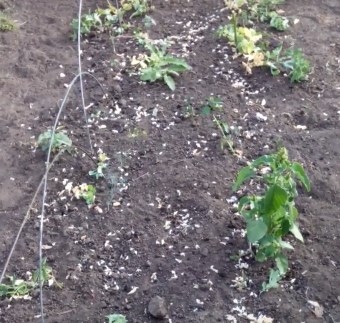Useful tips for gardeners: what can be planted after peas and why it is so important to change the place of planting vegetables
During the time of Great Russia, peas were considered a symbol of harvest and prosperity in the house. There was even a special holiday - “Pea Day”. On this day, peas were picked in the villages, went to the neighbors and treated each other with congratulations, and after the holiday the pea fields were emptied.
And even then, people thought about observing crop rotation: what to plant after peas next year, what crops can grow fruitfully on the land where peas grew? Let's figure it out, too.
The content of the article
Why alternate cultures
All plants take nutrients from the soil, and each one of its own. If one crop is planted in one place for a long time, the land will be depleted. In addition, growing in the garden for several years in a row, plants can be sick of the same type and risk being eaten by the same pests.
The alternation of crops at the planting site allows you to maintain soil fertility (and even replenish it).
Crop rotation rules
Crop rotation is a scientifically grounded change of crops and fallows in time and across territories (pairs are called plots on which nothing is planted, free of agricultural crops).
A full cycle of plant change in a crop rotation can last from 4 to 10 years.
Important! The basic rule of crop rotation: alternate crops belonging to different families in the beds. For example, for one year, nightshades (tomato, potatoes, peppers) grow on the site, then cruciferous plants (radishes, cabbage), then legumes (beans, peas), etc.
You can use another principle of changing cultures. It is based on their classification according to the part of the plant eaten. Remember, in the children's fairy tale there were "tops" and "roots"? To "roots" we refer everything that ripens under the ground, and to "tops" - everything that is above the soil: tops, fruits and flowers. Then the alternation can be organized as follows: root, fruit, tops, flower. Or in another way: flower, tops, fruit, root.
For example, if last season carrots ("roots") grew on the garden bed, then this season we plant tomato (fruit). Then we will change to greens (tops) and lupine (flower). But some gardeners do not grow flowers in the beds, saving space. In this case, the year of the flower can be skipped.
Peas in a crop rotation
 Peas are considered to be the best natural source of nitrogen for the soil. As it grows, small nodules form on its roots, which accumulate atmospheric nitrogen. After peas, about 100 g remains on one square meter of land. Plants need mineral nitrogen for proper growth and development, and it also affects the duration of their flowering.
Peas are considered to be the best natural source of nitrogen for the soil. As it grows, small nodules form on its roots, which accumulate atmospheric nitrogen. After peas, about 100 g remains on one square meter of land. Plants need mineral nitrogen for proper growth and development, and it also affects the duration of their flowering.
Important! You cannot plant peas in a newly fertilized area - it will go to the tops (there will be few pods).
You can grow peas in the garden from the middle of the calendar spring (from the second half of April). The deadline for planting (for early maturing varieties) is July 10.
With early sowing, the crop is harvested from late June to early July. By the end of August, the bed will be free. And with late planting of peas, almost until mid-summer, the land in the garden can be "idle". In order to make the most of the land, the garden bed can be used for other crops in your free time from peas.
What is better to plant before and after the peas in the garden?
| Best predecessors
(what to plant before) |
Best followers
(what to plant after) |
|
Any crops (no crops for which peas are a bad precursor) |